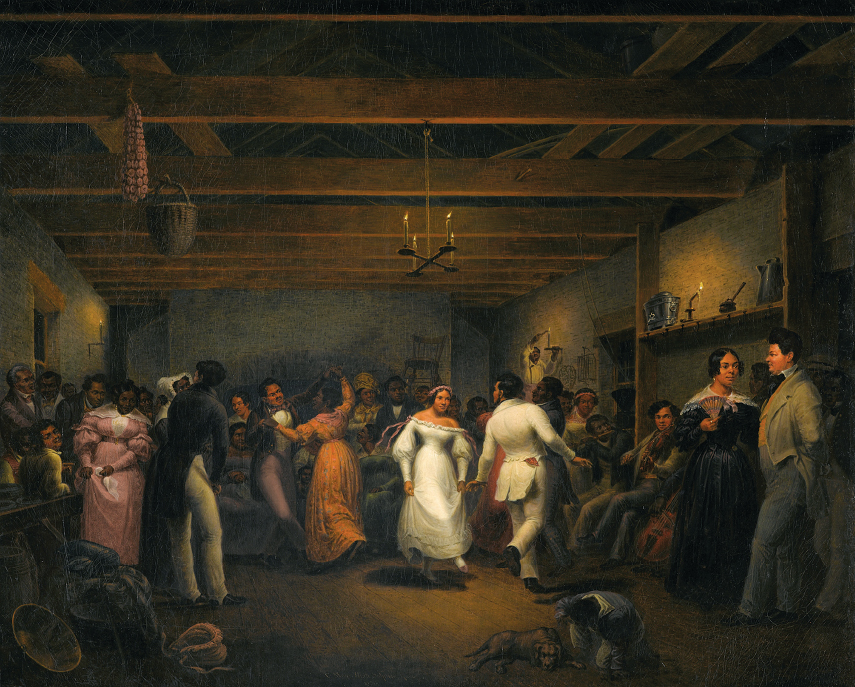Evangelical Black Protestantism
The emergence of black Christianity illustrated the synthesis of African and European cultures. From the 1790s to the 1840s, the Second Great Awakening swept over the South, and evangelical Baptist and Methodist preachers converted thousands of white families and hundreds of enslaved blacks. Until that time, African-born blacks, often identifiable by their ritual scars, had maintained the religious practices of their homelands.
African Religions and Christian Conversion Africans carried their traditional religious practices to the United States. Some practiced Islam, but the majority relied on African gods and spirits. As late as 1842, Charles C. Jones, a Presbyterian minister, noted that the blacks on his family’s plantation in Georgia believed “in second-sight, in apparitions, charms, witchcraft … [and other] superstitions brought from Africa.” Fearing for their own souls if they withheld “the means of salvation” from African Americans, Jones and other zealous Protestant preachers and planters set out to convert slaves.
Other Protestant crusaders came from the ranks of pious black men and women who had become Christians in the Chesapeake. Swept to the Cotton South by the domestic slave trade, they carried with them the evangelical message of emotional conversion, ritual baptism, and communal spirituality. Equally important, these crusaders adapted Protestant doctrines to black needs. Enslaved Christians pointed out that blacks as well as whites were “children of God” and should be treated accordingly. Black Protestantism generally ignored the doctrines of original sin and predestination, and preachers didn’t use biblical passages that encouraged unthinking obedience to authority. A white minister in Liberty County, Georgia, reported that when he urged slaves to obey their masters, “one half of my audience deliberately rose up and walked off.”

Black Worship Indeed, some African American converts envisioned the deity as the Old Testament warrior who had liberated the Jews and so would liberate them. Inspired by a vision of Christ, Nat Turner led his bloody rebellion against slavery in Virginia. Other black Christians saw themselves as Chosen People: “de people dat is born of God.” Charles Davenport, a Mississippi slave, recalled black preachers “exhort[ing] us dat us was de chillun o’ Israel in de wilderness an’ de Lawd done sont us to take dis lan’ o’ milk an’ honey.”
Still, African Americans expressed their Christianity in distinctive ways. The thousands of blacks who joined the Methodist Church respected its ban on profane dancing but praised the Lord in what minister Henry George Spaulding called the “religious dance of the Negroes.” Spaulding described the African-derived “ring shout” this way: “Three or four, standing still, clapping their hands and beating time with their feet, commence singing in unison one of the peculiar shout melodies, while the others walk around in a ring, in single file, joining also in the song.” The songs themselves were usually collective creations, devised spontaneously from bits of old hymns and tunes. Recalled an ex-slave:
We’d all be at the “prayer house” de Lord’s day, and de white preacher he’d splain de word and read whar Esekial done say — Dry bones gwine ter lib ergin. And, honey, de Lord would come a-shinin’ thoo dem pages and revive dis ole nigger’s heart, and I’d jump up dar and den and holler and shout and sing and pat, and dey would all cotch de words and I’d sing it to some ole shout song I’d heard ’em sing from Africa, and dey’d all take it up and keep at it, and keep a-addin’ to it, and den it would be a spiritual.
By such African-influenced means, black congregations devised a distinctive and joyous brand of Protestant worship to sustain them on the long journey to emancipation and the Promised Land. “O my Lord delivered Daniel,” the slaves sang, “O why not deliver me too?”
PLACE EVENTS IN CONTEXT